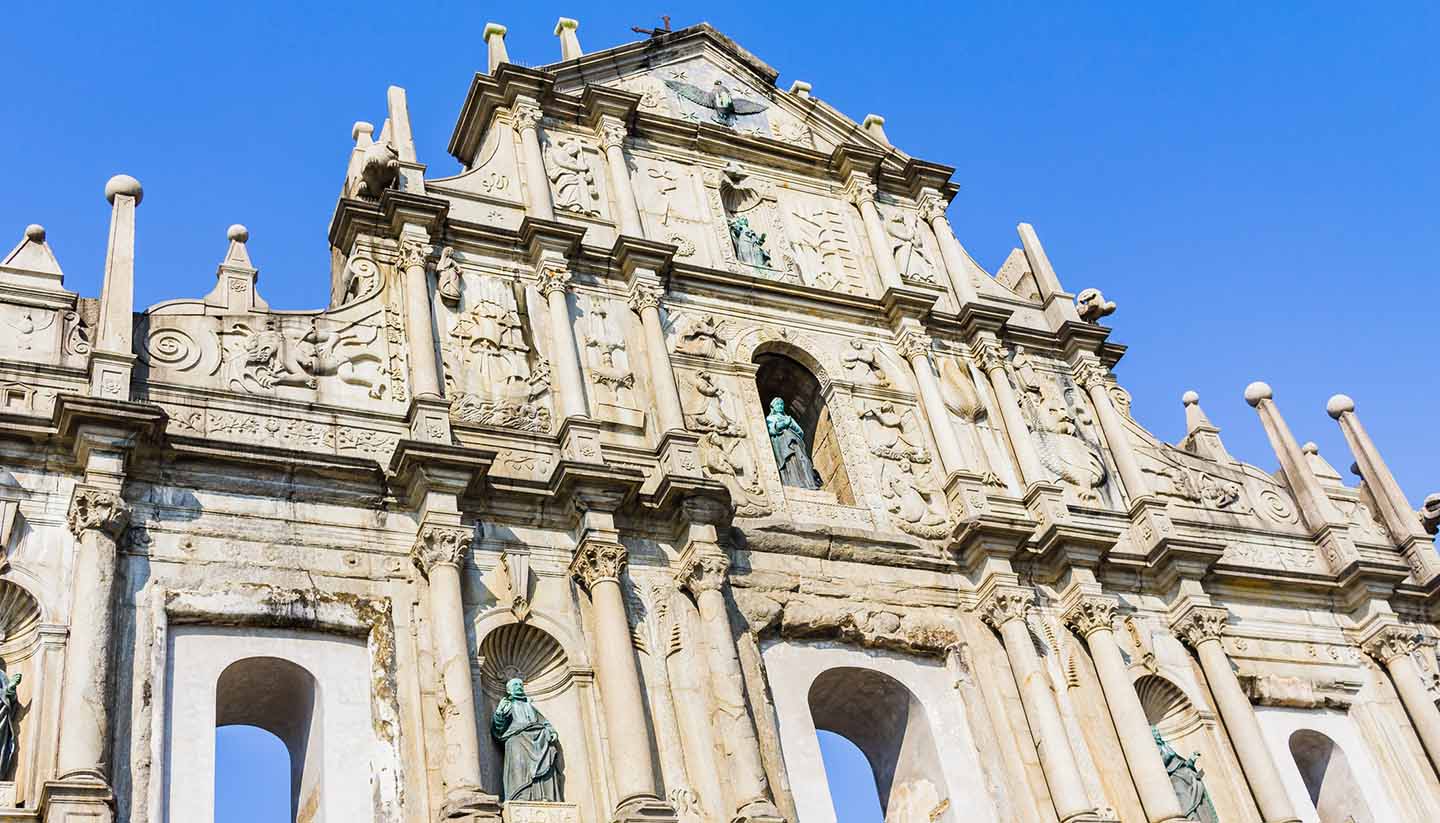Macau Weather, climate and geography
Weather and climate
Best time to visit
Macau has a subtropical climate, with temperatures regulated by its coastal location. Seasonal changes are heavily influenced by monsoons: it is warm and humid when southeast and southwest winds come in from the Pacific, drier and colder when the north winds come from Siberia and northern China.
Winter for Macau runs from November to February, which is when the northeast monsoon prevails, and is generally cold and dry. Spring comes in March and April, in the transition between the two monsoons, and brings with it wet and foggy weather. From May to September, during the southern monsoon, it is hot and rainy (with most rain occurring in the afternoon). Autumn, from the late September through October, is sunny and comfortably warm.
The average temperature for the year is around 23C (73F). In winter it can get as low as 10C (50F), while in summer it can reach the low 30s (86F). Winds can reach gale force and typhoons, coming in from the Pacific Ocean, are not unknown. They tend to hit between May and October, bringing with them rain and lower temperatures. Overall the best time to visit is autumn (October to December), when days are sunny and warm and the humidity low.
Required clothing
Wear light cotton clothes in summer, take a sweater for cooler nights from September to November and a jacket for winter. Be prepared for rain at any time, but particularly from May to September.
Geography
Downtown Macau is situated on a tiny peninsula at the mouth of the Pearl River, on the southern coast of China’s Guangdong Province (although it is politically distinct from the province). It was once an island, but has been linked to the mainland through land reclamation which has also significantly increased the size of the settlement. As a result the terrain is largely flat, although with hilly portions which indicate the location of the original land.
Three bridges link the peninsula to its nearest island, Taipa, which in turn is joined to the island of Côloane by the 2.2km (1.4-mile) Cotai Strip causeway (an area of reclaimed land which effectively makes the two islands into one).
At the extreme northern end of the peninsula, on a narrow isthmus, is the imposing Portas do Cerco gateway (Border Gate), which leads to the Zhuhai and Zhongshan areas of the People's Republic of China. There is also a border crossing from the Cotai strip, designed to make access to the casinos even easier. Some 60km (37 miles) to the east-northeast, across the mouth of the river, is Hong Kong.
There is talk of a project to build a series of bridges and tunnels which will link Macau, Zhuhai and Hong Kong; the longest section of bridge could be a huge 22.8 km (14.2 miles) long. The start of the "fourth link" project had been scheduled to start in 2009 but had been delayed due to concerns about its environmental impact.


